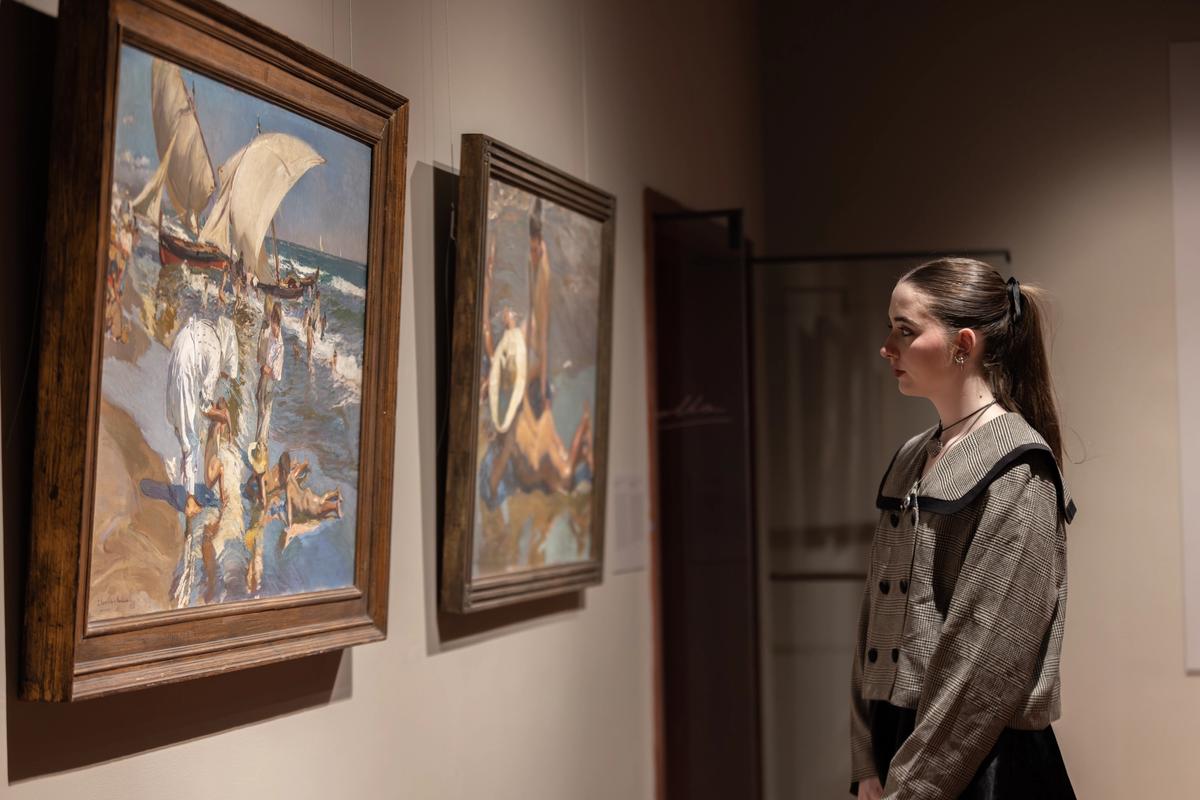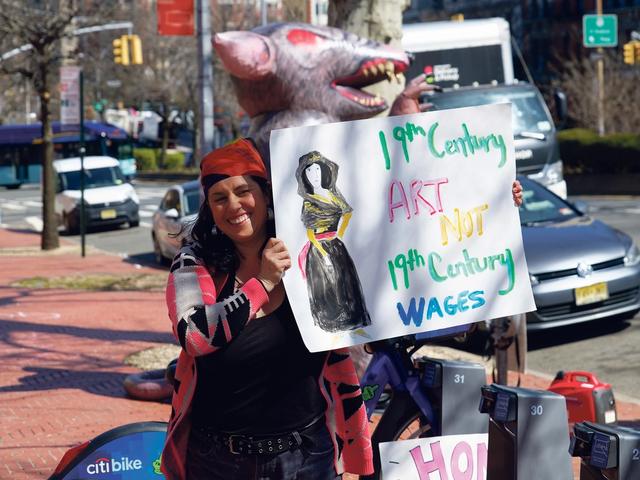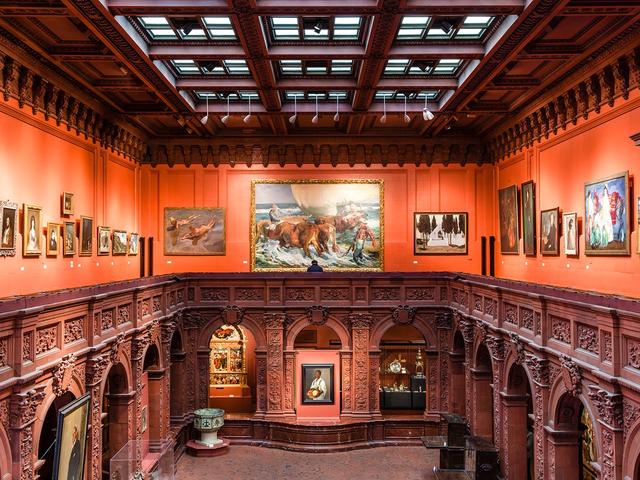The Hispanic Society Museum & Library, a palatial institution in New York’s Washington Heights neigbourhood, has reopened a section of its campus that had been closed for renovations since 2017. The institution's reopening, originally planned for early April, was delayed by nearly two months after unionised workers there went on strike.
Founded in 1904 by railroad scion Archer Milton Huntington, the Hispanic Society was established as a free and public venue for the study of the art and culture of Spain, Portugal, Latin America and the Philippines. It has long been described as a “hidden gem”, far off the radars of both the tourists making pilgrimages to art museums in Midtown and on the Upper East Side and the residents of the working-class upper Manhattan neighbourhoods near its campus.
The institution boasts a collection of nearly 750,000 objects, a trove unparalleled in depth and breadth outside of its countries of origin. An ornate architectural marvel built on property formerly owned by acclaimed naturalist John James Audubon, the Hispanic Society, newly primped, polished repainted and ADA (Americans with Disabilities Act) compliant, feels like a living memory of New York’s yesteryear, a glowing manifestation of pedagogies past—as if a bespectacled magnate might descend one of the staircases flanking the museum’s entrance at any moment.
Spectacular murals by Spanish Luminist painter Joaquín Sorolla y Bastida beam next to displays of impossibly ornate creations by jewellery designer Luz Camino. A partial mausoleum, complete with stately tomb effigies, seems like it would fit right in at the Vatican.
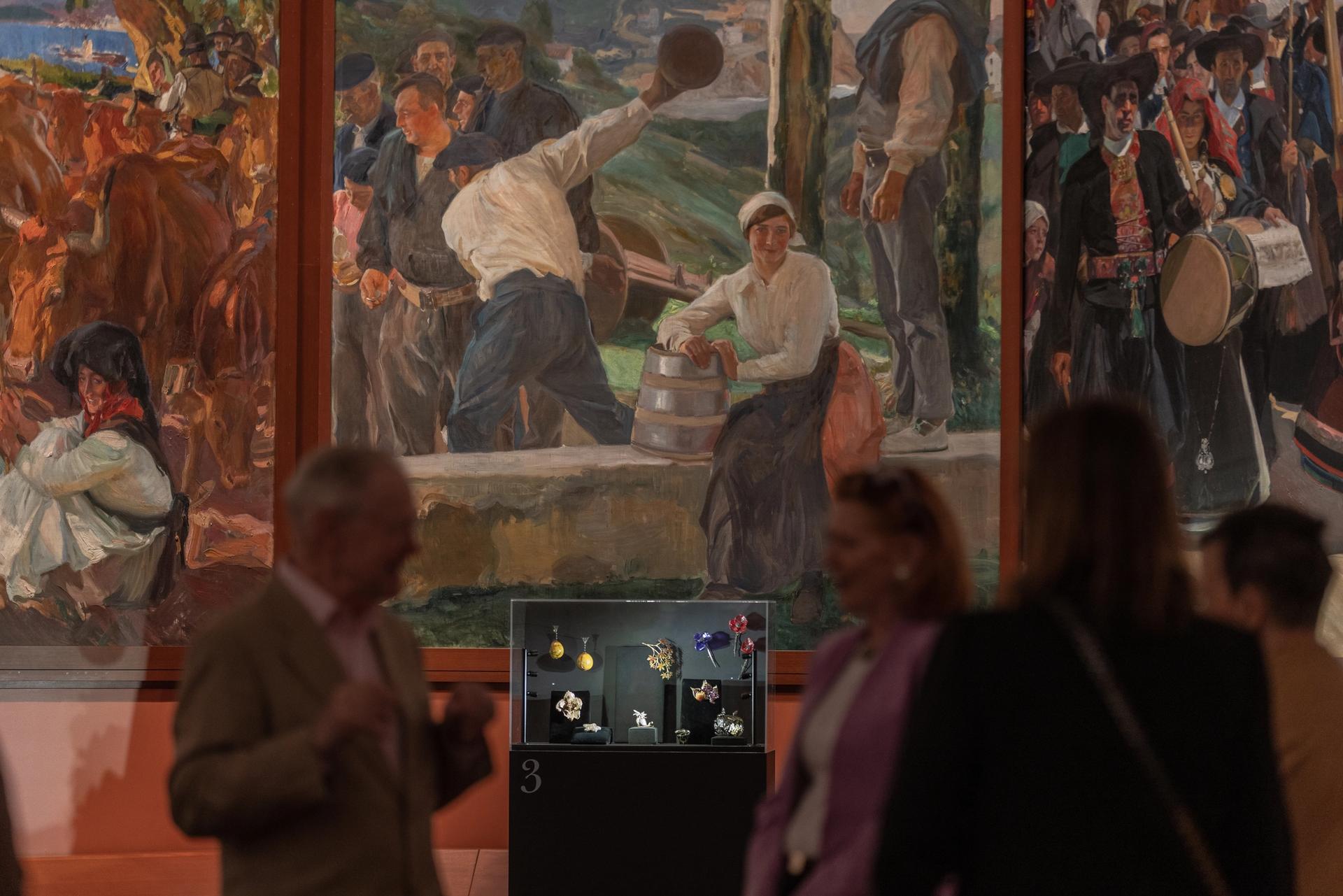
Installation image of Jewels in a Gem: Luz Camino at the Hispanic Society Museum, in conjunction with the centennial celebration of artist Joaquín Sorolla y Bastida, whose 1912 Vision of Spain mural commission occupies the walls of the Sorolla gallery. Photo: Alfonso Lazano. Courtesy Hispanic Society Museum & Library
This imperial mise en scène is in stark contrast to the recent eight-week strike undertaken by the Hispanic Society's union, whose members cited stagnant wages, lack of transparency and iniquitous healthcare policies. The union prevailed, ratifying a two-and-a-half year contract that raised salaries by over 18%, required severance pay and instated professional development funds.
Still, prior to the opening, strike and renovations, the Hispanic Society had long functioned as much as an archive as an exhibition space, loaning out objects from its peerless collection to venues like the Museo Nacional del Prado in Madrid or the Royal Academy of Arts in London, where they drew record crowds. Meanwhile residents of Washington Heights, many of whom hail from regions Spain violently colonised, still don’t know the place exists.
“Any time you’ve got something called the Hispanic Society it confuses people," Michael Mowatt-Wynn, then president of the Harlem & The Heights Historical Society, told The New York Times in 2011. "You think this is a social club or a sports club, that you’re supporting soccer or something.”
Museums today operate under very different expectations than they did 119 years ago—visitors hunger for inclusion, context and a curatorial reorientation that does not take Eurocentric values as given. Following the institution's $20m renovation, its chief executive and director Guillaume Kientz, who arrived on the scene in 2021, wants to elevate the museum’s profile by embracing modernity, a move the institution has skirted for years out of loyalty to Huntington’s founding vision.
“The mission is really to bridge the past, the present and the future, and the very local and the very global”, Kientz says. “This is why we also have a number of initiatives with local non-profit organisations and institutions here to do projects together. We want to be an agent of empowerment.”
The Future
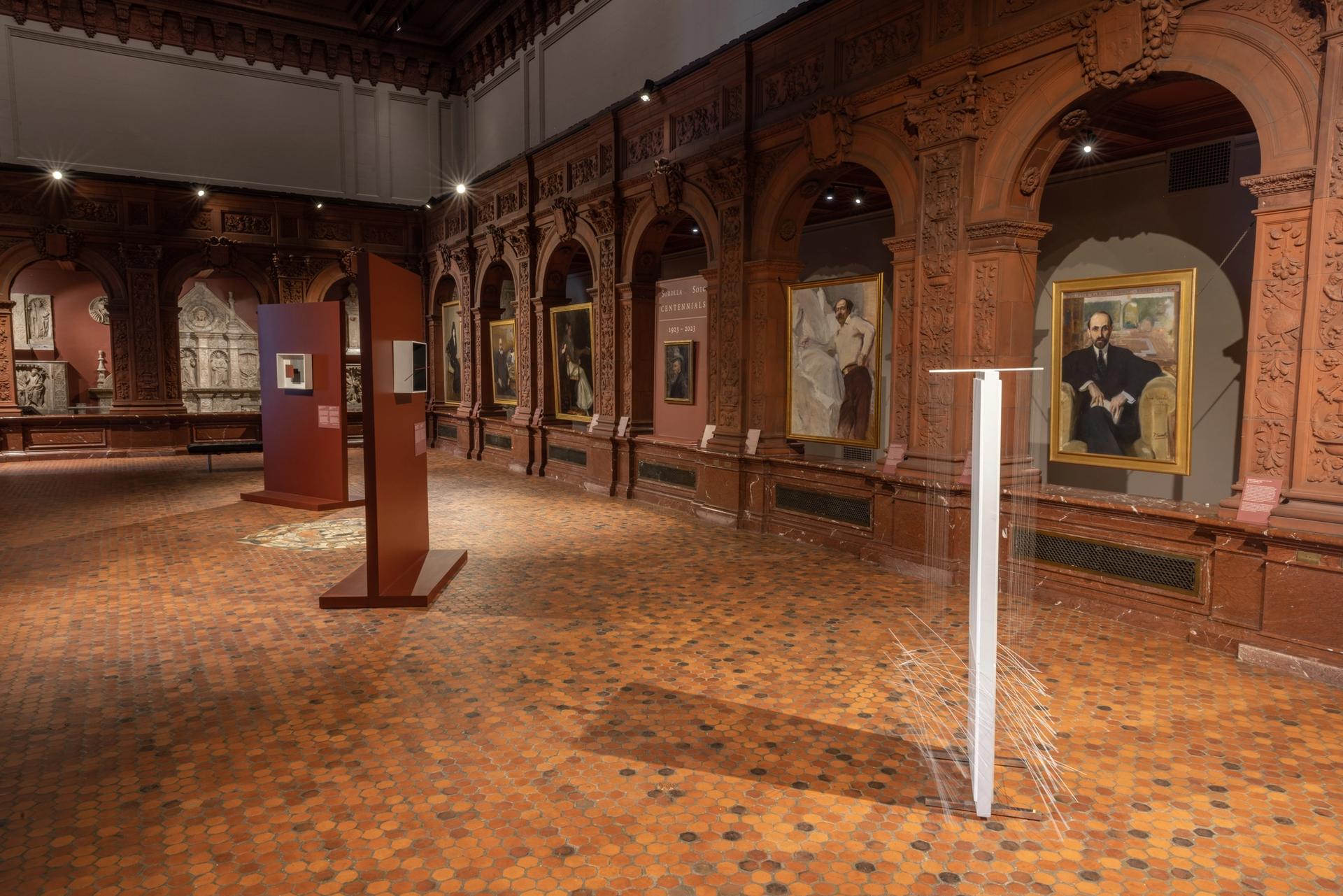
Installation view of the renovated main court gallery, featuring an exhibition of works by Sorolla (who died in 1923) and kinetic art pioneer Jesús Rafael Soto, who was born in 1923 Photo: Alfonso Lazano. Hispanic Society Museum & Library
The Hispanic Society describes its ongoing capital project as the most ambitious in its history, upgrading its three landmark buildings and restoring the granite Audubon Terrace to “maximise the potential of the organisation’s vast resources” and heighten its profile as a destination within New York City.
“These renovations will allow the museum to cater to a wider audience and support the work of contemporary, living artists, which was a vital part of Archer Huntington’s mission when he founded the museum,” Kientz says. “We want to foster more community projects and initiatives in the renovated spaces. The Museum will be a resource amenity and opportunity for the surrounding community and New Yorkers at large.”
The primary teams leading the renovation are Selldorf Architects—the firm behind countless art galleries, the transformation of the Neue Galerie building and the expansive Clark Art Institute—and landscape architecture firm Reed Hilderbrand, which most recently lent its talents to the 250,000 sq. ft Richard Gilder Center for Science and Education at the American Museum of Natural History.
Starting in 2024, the Hispanic Society will start work on the next phase of its four-year, $50m masterplan led by board chair and former Metropolitan Museum of Art director Philippe de Montebello. A new visitor centre, educational facilities, conservation lab and special exhibition galleries are among the main features of the next round of renovations.
“An example of how we are fostering ties to our community in Upper Manhattan is our partnership with the Northern Manhattan Arts Alliance, creating installations by living artists on the Broadway Terrace just inside the gates between 155th and 156th streets,” Kientz says. “Watching people come in every day and take selfies, I realised that this is an amazing stage. It is our most immediate driver to convince people to pass through the gate.”
The projected $50m cost for next phase of the Hispanic Society's campus modernisation will be an ambitious goal for the institution’s board, which, while expanded considerably from its skeleton crew of years past, remains committed to keeping admission to the museum free. There is also the enduring challenge of drawing crowds that far uptown, which Montebello touched on in a 2022 interview with The Robb Report. “There’s a psychological block that people have about going to 156th Street and Broadway,” he said. “It sounds to them as if they’re going to Vermont, or Quebec.”
Adapting Huntington’s vision for contemporary audiences, however, remains the tallest order for the Hispanic Society's leaders and staff.
The Past
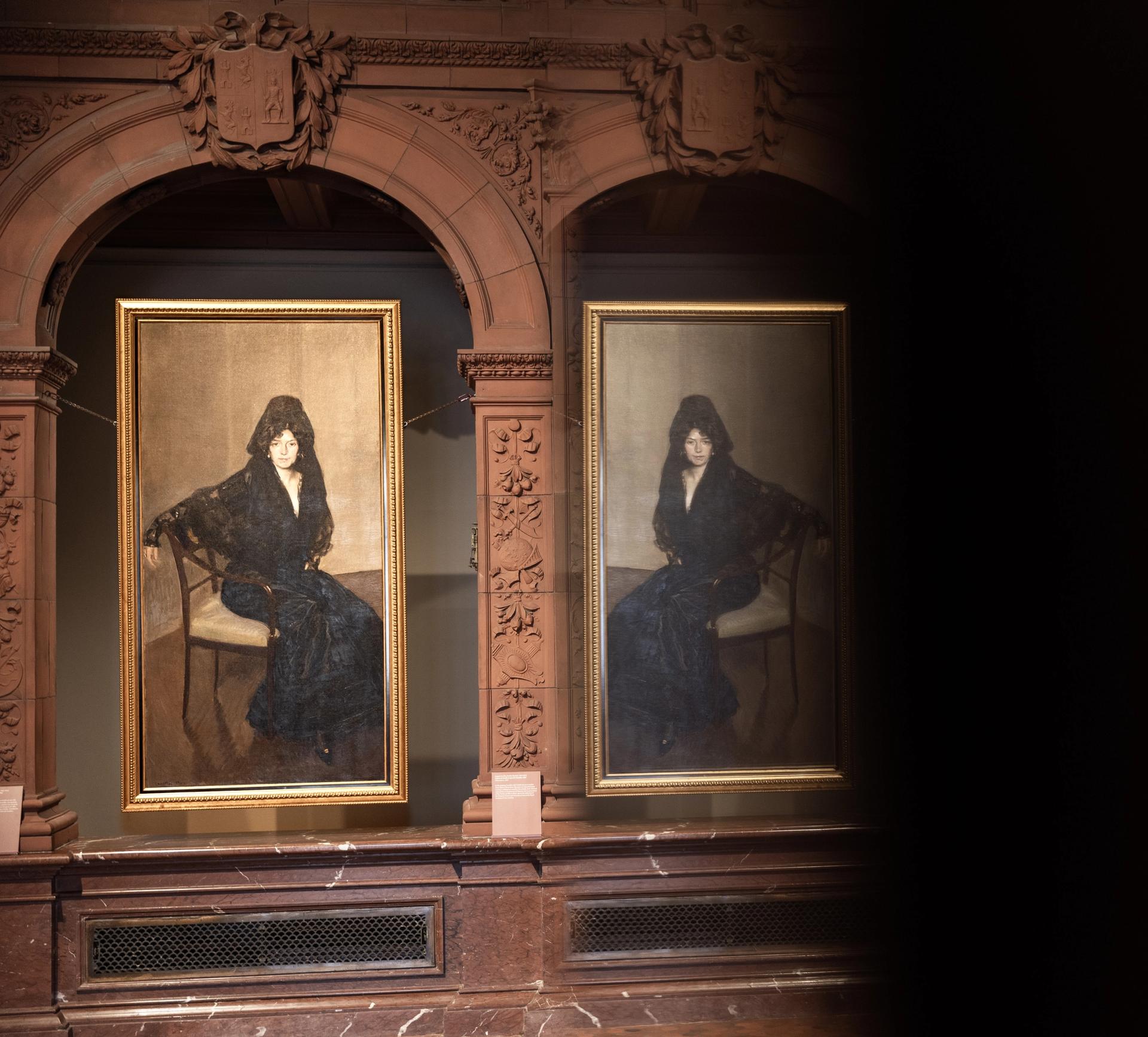
Joaquin Sorolla y Bastida, Señora de Sorolla in a Spanish Mantilla, 1902 Photo: Alfonso Lazano. Courtesy Hispanic Society Museum & Library
Huntington, the adopted son of an industrialist worth $2bn in today’s currency, possessed the passion of a romantic and the dogged ambition of a statesman, founding museums, botanical reserves and invite-only societies that promoted his belief in the creative supremacy of European civilisation.
His scholarly focus on Spain made a lot of sense, given his background. At the time, many progressives blamed Spain’s political upheaval on the monarchy’s failure to properly “educate” the middle and lower classes, a lesson Huntington took to heart. His emphasis on free programming was a didactic tool, sharing his extensive archives and the natural drama of historiography in the hopes that America would not succumb to class war.
In a letter to his mother, the socialite Arabella Huntington, Archer wrote: "If I can make a poem of a museum it will be easy to read. I have often said I am not a 'collector', rather an assembler for a given expression." This dedication to Enlightenment values took hold in Huntington during his childhood. After a visit to the National Gallery in London at age 12, he reportedly scribbled in his diary: “I think a museum is the grandest thing in the world. I should like to live in one.”
Huntington, who was largely educated by private tutors, first encountered the Spanish language in the late 1870s from Mexican workers on the ranch owned by his aunt, Emma J. Yarrington Warnken, near San Marcos, Texas. In 1882, during his first trip to Europe, he was given a copy of George Borrow’s The Zincali: An Account of the Gypsies of Spain (1841), which further stoked the flame of obsession in the young man. The Zincali, an early form of ethnography, tracked the lives and culture of Spain's Romani people from the point of view of a “benevolent” white patriarch infiltrating their ranks. Huntington's interest in the Iberian Peninsula and its colonial influence bespeaks a brand of Enlightenment liberalism that not only produced phrenology and other race-based pseudosciences, but also belies a fascination with the Other.
Huntington was hardly alone in harbouring these attitudes, but their manifestation in the Hispanic Society's displays, programmes and texts remained largely unchanged and unchallenged for decades prior to the present campus revamp. In addition to features like refurbished plumbing and air conditioning systems, ventilation and egress signage, there are clear signals of a more forward-thinking methodology. Wall texts are written in both Spanish and English, and a new project space directly connected to the Main Court gallery currently houses In Search of Juan de Pareja: From Arturo Schomburg to Jas Knight, a complementary exhibition to the Metropolitan Museum’s Juan de Pareja: Afro-Hispanic Painter.
The gallery investigates the life and career of Juan de Pareja (1606-1670), an Afro-Hispanic painter and former slave of legendary Spanish artist Diego Velázquez. Curated by Madeleine Haddon of the Victoria & Albert Museum in London, In Search of Juan de Pareja pairs a copy of Velazquez’s portrait of Pareja (the original is in the Met show) with a contemporary version of the painting by Brooklyn-based artist Jas Knight. The capsule exhibition also includes a work from the Hispanic Sociey's collection that Huntington acquired in 1904, Portrait of Don Alonso Mora y Villata (1654-80), which has subsequently been attributed to Pareja.
“Given the transhistorical and cross-cultural focus of the Hispanic Society’s collection, I am thrilled that this re-inaugural exhibition will engage with that dialogue through the work of the singular Juan de Perja,” says Haddon. “Including Jas Knight, a living artist, heightens the importance of the show and is a prime example of what future engagement between the museum’s collection and living artists could look like.”
Much remains to be done as the Hispanic Society prepares for its next round of renovations and upgrades, but one thing is clear—the institution formerly seen by many as a time time capsule is now very much in flux, moving, growing and adapting to the new realities of a more intersectional future.


